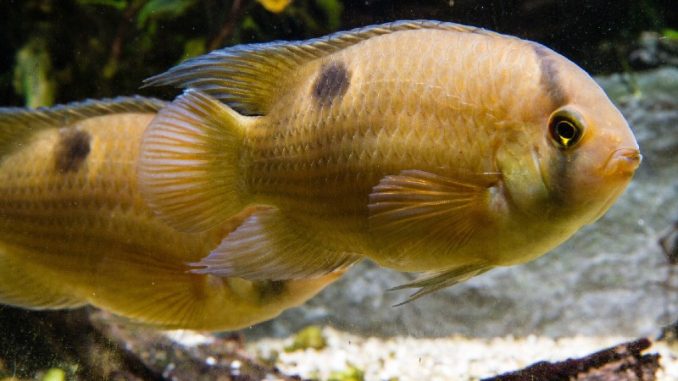
The keyhole cichlid (cleithracara maronii) is a freshwater fish native to South America. Keyhole cichlids belong to the Cichlidae family and are one of many species of cichlids.
The keyhole cichlid is easy to care for and has a distinct keyhole marking on its body. Keyhole cichlids are docile and shy, which makes them popular among beginner fishkeepers. These fish also don’t eat plants or burrow, so they’re excellent additions to planted aquariums.
TABLE OF CONTENTS
Keyhole Cichlid Facts & Overview
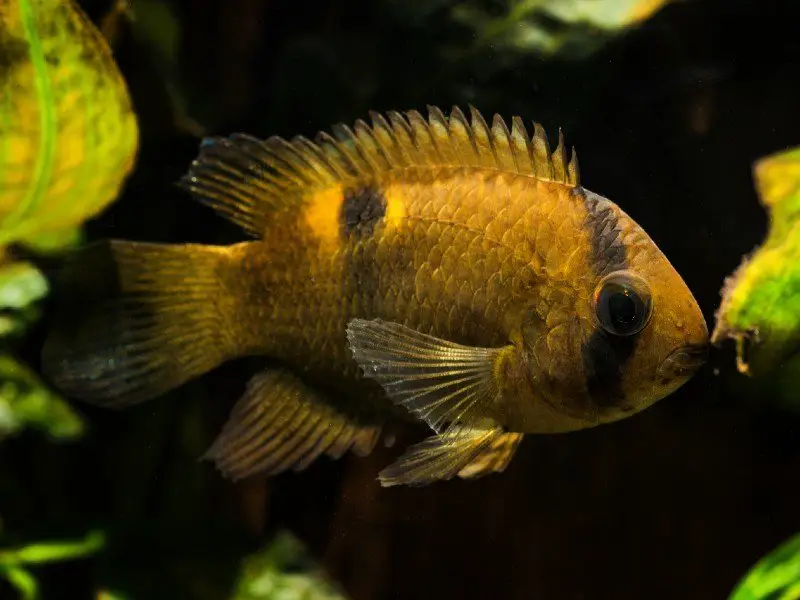
| Category | Rating |
| Care Level | Easy |
| Temperament | Timid and even-tempered |
| Color | Cream, yellow tint |
| Lifespan | ~10 years |
| Size | ~4.75 inches |
| Diet | Omnivore |
| Family | Cichlidae |
| Minimum Tank Size | 20 gallons |
| Tank Setup | Slow-moving water, dense vegetation, hiding spots |
| Compatibility | Similar-sized peaceful fish |
Keyhole cichlids are scientifically known as cleithracara maronii and are part of the Cichlidae family. Their name comes from the distinct keyhole marking on their bodies. Cleithracara is a mix of the Greek word for lock (kleithron) and the Guaraní term for cichlids (acará).
Keyhole cichlids are native to South America and inhabit slow-moving waters with dense vegetation. They are primarily found in river basins, tributaries, or coastal creeks. Most of the population can be found in the lower Orinoco basin in Venezuela.
Keyhole cichlids can live up to 10 years in ideal tank conditions.
The majority of keyhole cichlids within the trade are now captive-bred. They can be found worldwide at most pet stores. These fish cost between $12 and $20 on average, with price depending on maturity, size, markings, and location.
Keyhole cichlids are hardy fish that will thrive in most water conditions. However, they are easily startled and need plenty of hiding spaces.
Appearance & Behavior
The keyhole cichlid has subdued coloration. Its scales are a yellow-cream hue, but fin color can vary between fish. Coloration becomes lighter as keyhole cichlids mature.
Keyhole cichlids’ dorsal and anal fins are elongated. They have rounded foreheads and more oval-shaped bodies than other cichlid species.
The keyhole’s most distinguishing feature is its black keyhole marking located on its upper flank. This marking simply resembles a black spot sometimes. These fish also have a black line that spans across their head and runs through the eye.
Keyhole cichlids can grow up to five inches in the wild, but they often only grow up to four inches in a tank. Juveniles are one to three inches long.
Keyholes have a slow growth rate. A one-inch juvenile keyhole can take over half a year to become two inches in size.
Sex is only distinguishable once the fish is fully matured. Males are larger and have more pointed, extended dorsal and anal fins than females. Females also become plump during breeding time.
Keyhole cichlids turn brown and blotchy when they are stressed. The keyhole marking can also become stretched out across the body. They are capable of camouflaging themselves by changing their color to match their surroundings if they feel threatened.
Typical Behavior
Keyhole cichlids are even-tempered, shy, and startle easily. These fish camouflage themselves or retreat to a hiding space when they feel threatened.
Keyhole cichlids are ideal community fish. They aren’t confrontational and get along well with similar-sized, docile species.
They only exhibit aggression when breeding or protecting their fry. Males will chase other male keyhole cichlids away to establish their territory. A spacious tank with abundant hiding spots will help to prevent territorial conflict.
Keyholes have a laidback swimming style. They are most active during the day and spend a lot of their time swimming among rocks, caves, and vegetation. They don’t burrow or eat plants, making them a good fit for a planted aquarium.
Keyhole cichlids are intelligent and can recognize their main fishkeeper. These fish also display impressive courtship rituals. The male will swim beside the female and expand its gill covers. They are monogamous and bond for life.
Keyhole Cichlid Care
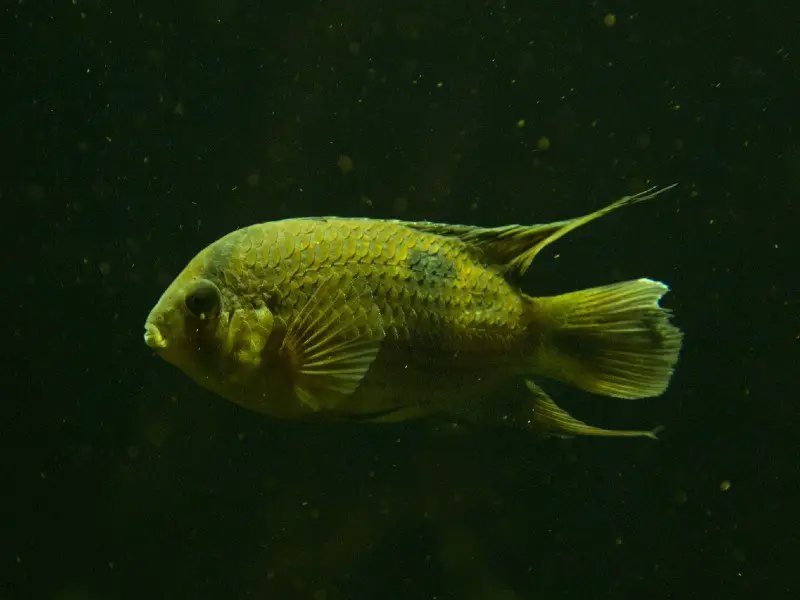
Keyhole cichlids are peaceful and easy to care for, making them ideal for beginners. They can tolerate most water conditions. Keyhole cichlids will thrive with the proper care and tank setup.
Keyhole cichlids are timid and shy. Hiding spots will help them feel safe. These fish are also used to slow-moving water, so gentle filtration is a must. Partially change water weekly to keep the tank clean and free of debris.
The tank should be kept dim and densely vegetated. Water should be slightly acidic and warm. These fish are omnivores that will eat most foods, but a varied diet is better for their health and wellbeing.
Keyholes are hardy and aren’t prone to any particular disease. However, they can develop common freshwater diseases like ich and fin rot. Maintaining water quality and creating a stress-free environment is the best means of preventing disease.
Habitat and Tank Requirements
Keyhole cichlids do best in an aquarium that resembles their natural habitat. Keyhole cichlids live in the slow-moving freshwater river basins and tributaries of South America. These waters are densely vegetated, rocky, and are usually blackwater environments.
The substrate consists of sand, leaves, branches, submerged tree roots, and aquatic plants like Cabomba. Water is warm, moderately soft, and can reach a pH level as low as 4.0.
Tank Conditions
Keyhole cichlids can manage in most water conditions, but they do best in slightly soft or moderately hard water (8 to 18 dGH) with a pH balance between 5.5 and 7.5. Water should be warm, ideally between 68°F to 82°F. Install a heater to keep water temperature regular.
Abrupt changes in water parameters can leave keyholes stressed and prone to sickness.
Keyholes prefer a fine-grained sandy substrate that’s topped with flat stones, leaf litter, and roots. The tank should have at least two inches of substrate. Clean substrate beforehand to prevent the water from becoming cloudy.
These fish are accustomed to slow-moving water, so avoid filtration systems that generate strong currents. Appropriate placement of the filter and decorations will help to diffuse the current. Ensure decorations are smooth to prevent scale damage.
Keyholes need a plethora of hiding spots to feel safe. Create these hiding spaces with plants, rocky caves, pots, and tangled driftwood. Although hiding areas are vital, there should still be ample space for the fish to swim freely around.
Aquarium Plants
While keyholes spend most of their time swimming among plants, they don’t eat or uproot them. Keyhole cichlids also don’t burrow, so they won’t displace live plants or decorations. Ideal plants are warm water varieties, such as:
Floating plants will subdue the light and keep the water dim. Never use harsh and bright lighting with these fish. Carry out partial water changes weekly to ensure nitrate and ammonia levels stay at a minimum.
Tank Size
Keyhole cichlids are smaller than many other cichlid species. However, they require ample space to help them feel confident. An elongated 20-gallon aquarium will suffice for a pair of keyholes, but treat this as the bare minimum.
Try to find a larger and more spacious tank, especially if you intend to introduce more keyholes. Each new fish will require an extra ten gallons.
Keyhole cichlids work well in planted aquariums and community tanks that contain at least 50 gallons of water. Don’t forget to invest in a secure cover. Keyhole cichlids are known to jump out of the tank if they get scared.
Replicating the keyhole cichlids’ natural, blackwater environment can help keyholes feel at home. Simply scatter dried, decaying leaves at the top of the tank. Replace regularly to prevent dirt buildup.
Take extra care when moving around décor or doing tank maintenance. Sudden movements will startle keyholes. Sudden movements outside of the tank will also startle them.
Tank Mates
Keyhole cichlids need the company of their own species to help them feel at ease. Keyholes should ideally be kept in a group of six or eight.
Keyhole cichlids will also become more confident in the presence of shoaling or schooling species. They work as dither fish, their outgoing behavior indicating to the keyholes that there are no threats nearby. Ideal dither fish include peaceful characins and rasboras.
Tankmates should be of similar size, have a peaceful temperament, and also share similar water preferences. Suitable fish include:
- Docile cichlid species
- Cory catfish
- Hatchetfish
- Giant danios
Avoid aggressive fish and smaller fish that can easily be mistaken for food.
Diet and Feeding

Keyhole cichlids are omnivores. They eat a variety of food in the wild, with their diet mainly consisting of detritus, larvae, and small crustaceans like shrimp. Keyhole cichlids do best on a varied, nutrient-rich diet in an aquarium setting.
Feed keyholes a mix of dried food like pellets, and live or frozen foods such as bloodworms and daphnia. They will also eat vegetables. Vegetables cut into bite-sized pieces will aid digestion and offer a great source of fiber. Good options include peas, cucumber, and spinach.
Feed keyholes what they can consume within two minutes. This will ensure portion size is accurate and prevent leftover food from dirtying up the tank. Feed these fish twice daily. Establish a feeding schedule to ensure they are fed at regular times.
Their diet should be made up of flakes or pellets unless you intend to breed them, where they should instead mainly be fed live or frozen foods. Keyholes rarely feed on plants or algae, but they will eat smaller fish or fry not belonging to them.
Breeding
Keyhole cichlids are monogamous substrate spawners. Pairs happen naturally. Once paired up, they stay together for life. Breeding occurs easily if the right conditions are met.
Ensure water is well-maintained and start feeding the pair high-quality live or frozen foods such as daphnia and bloodworms to trigger spawning. Females will become plumper as the eggs develop.
If keyhole cichlids are the sole species in the aquarium, a separate breeding tank isn’t necessary. Keyholes don’t eat their young and go to great lengths to protect them. However, it’s best to set up a breeding tank if they are part of a community tank. A dedicated breeding tank will provide a safe environment and prevent other fish from eating the eggs and fry.
Keyholes lay their eggs on solid, flat surfaces, so the breeding tank should provide this type of area. Flat stones are ideal, but broad leaves, smooth driftwood, and the aquarium’s glass can work as well. These fish will clean the spawning area beforehand.
Although keyhole cichlids typically don’t eat their young, inexperienced pairs may eat the first batch of eggs, especially if they’re stressed or disturbed during the spawning process. However, their spawning will have a much better outcome after just a few attempts.
The female lays around 300 eggs. The female will guard the eggs, and the male will patrol the territory around them once all the eggs are deposited. Eggs hatch within three to five days. During this time, the parents will fan oxygenated water over the eggs to increase oxygen and also to remove unfertilized eggs from the spawning area.
The parent pair will continue to look after the fry after the eggs hatch, sometimes for as long as several months. Feed fry newly-hatched brine shrimp or infusoria.
Should You Get a Keyhole Cichlid for Your Aquarium?
Keyhole cichlids are suitable for beginners and experienced fishkeepers as they are hardy and peaceful fish. They are perfect for planted aquariums. However, they aren’t compatible with aggressive species and will require dither fish to help them feel more confident.
Keyholes aren’t the most colorful cichlid species, but they make up for it with their unique markings, gentle temperament, and heartwarming devotion to their partner and fry. Witnessing a pair’s bond makes for a wonderful experience.

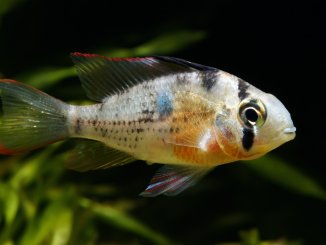
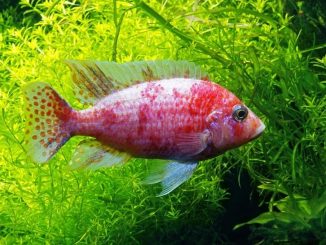
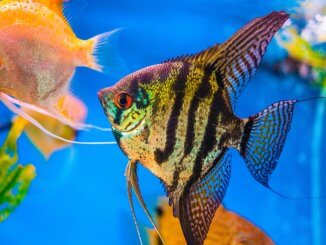
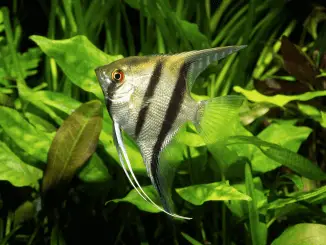
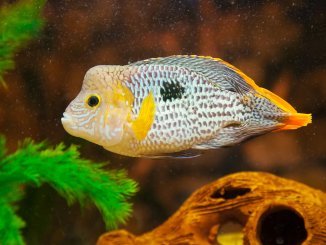
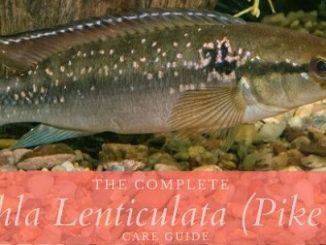
Be the first to comment